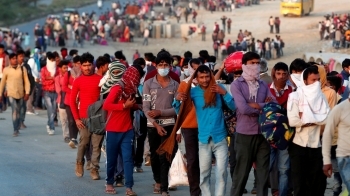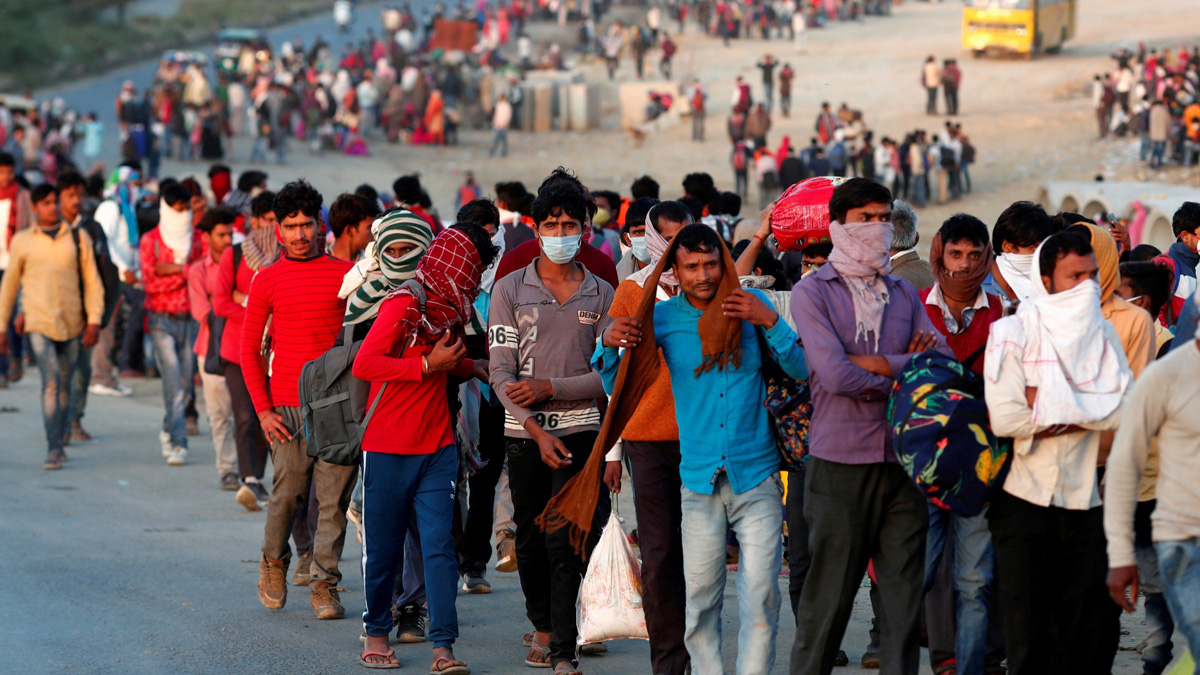
.jpg) Ramesh Menon
Ramesh Menon

The reality of unemployment increasing putting millions of families in India in a tragic pincer cannot be lost on us anymore. Propaganda that is so well-orchestrated today would make us believe that the Indian economy has rebounded after the Covid-19 pandemic and all is well. There has been a surfeit of front-page ads singing the song of how well various state governments, especially those who are going to face polls, are doing.
A revealing report of the Centre for Monitoring Indian Economy (CMIE) indicates that salaried jobs across the country registered a sharp decline in 2020-21. Over 1.5 million jobs disappeared just in August alone.
The report said that while there were 399.39 million employed in July this year, in August, it fell to 397.78 million. It was quite a fall in one month. Both the formal and informal sectors in urban and rural India had taken a hit.
The monthly data of CMIE showed that there were nearly 36 million looking for work in August compared to around 30 million in July this year.
Covid-19 had triggered off a kind of bloodbath we have never seen. Many businesses closed down or drastically cut down their staff to make up for the losses. Even when there were signs of the economy picking up after lockdown restrictions were lifted partially and then fully, business enterprises were not hiring them back or creating new slots for employment as they were trying to force the small workforce to deliver. Fearing that they would lose their jobs when so many were desperate to get jobs, they all complied.
Poor economic activity, sluggishness in the marketplace, closure of so many establishments and a shrinking employment market were increasing the panic as the reality hit home. Many have realised that their jobs have gone forever.
Both in the formal sector and informal sector there have been cuts in jobs and salaries. With salaries plunging, people are wary of spending and so there are fewer sales of non-essential items as everyone has cut their budget in some way or the other. With the rising prices of everything imaginable, it was not a pretty picture.
One indication of the desperation to find work was the fact that in August the total labour force size was 433.86 million. Incidentally, this was over four million more than the figure in July.
After the second wave of Covid-19, in August, India’s urban unemployment rate had shot up about 1.5 percentage points to 9.78. Before the second wave, it was 7.27 percent.
Rural India was also affected. In August, rural unemployment rose 1.3 percentage points to 7.64 percent. In July, it was 6.34 percent.
During the lockdown, millions of migrants from rural India who were working in urban pockets like Delhi, Mumbai, Bengaluru, Hyderabad, Gurgaon and other cities moved back to their villages as they had either lost their jobs or the employer threw up their hands saying that they cannot afford to pay salaries when their economic activity had ground to a halt. Some did find work there under the MGNREGA government schemes, but that was for a short while -- a few days every month. As the lockdown eased, these migrants moved back to their places of work to find that their jobs were no more there or they had to agree to steep salary cuts.
Ostensibly, a lot of activity seems to have come back to normal, but the job market is still very tight and there are no immediate signs that it is going to improve. At the moment, eight states are reporting double-digit unemployment rates. It includes rich states like Haryana and poor states like Rajasthan. Both these states provide jobs to millions of migrants from some of India’s poorest states.
Haryana reported the highest unemployment rate at 35.7 percent in August. Rajasthan reported 26.7 per cent. Jharkhand was at 16 per cent. Bihar and Jammu & Kashmir were at 13.6 per cent. Delhi reported an unemployment rate of 11.6 per cent. But though eight mainline states have shown unemployment figures plunging down, the Centre has done little to deal with the problem. It has now got into election mode once again with polls scheduled in Punjab and Uttar Pradesh where the stakes for the BJP are very high.
The second wave could end up whipping up over 120 million job losses which means that it would amount to 30 percent of the employed population across various sectors, according to the CMIE report.
Data indicates that just in the first two weeks of April 2021, the unemployment rate has risen to over 8%, with a 40% fall in the labour participation rate. Compare this with March 2021, where the total employment figure was 398 million. This means that it was 5.4 million less than the 403.5 million in 2019-20.
Desperate workers were moving to less productive and lucrative jobs as they had no choice. Nearly eight percent of employees were found to have migrated to agriculture. Others moved into unskilled jobs if they could find them.
Unless there are actionable policy changes, the situation might get worse with the third wave coming soon as predicted by numerous experts.
A study by Azim Premji University showed that 23 crore people had been pushed below the poverty line when the first wave of the pandemic struck. The national minimum wage threshold is just Rs. 375 per day and one can imagine how this large section of the population does not even earn that. During the last year of the pandemic, there had been a rise of 15 percent in poverty in rural India and 20 percent in urban India, it said.
It is frightening to think how the scenario would be with the third wave which threatens to happen anytime now. There would be more job losses with new lockdowns and closure of business establishments.
One priority area for the government should have been to get people vaccinated while strictly enforcing Covid norms as the lockdown was relaxed. But visit any city or any marketplace and see how the norms are openly violated as there are no checks; often no stringent action is taken even when violations are noticed. Everyone is behaving as if Covid had vanished from the country. The fact that figures are being suppressed and Covid deaths are not being acknowledged in official figures is something that is well-known. Officially, even deaths due to acute shortage of oxygen, which made various countries in the world rush in supplies, are not being acknowledged.
The government in its wisdom has decided to stop declaring the results of surveys or not do it at all to hide the truth behind what is happening in the employment market. Maybe, it might be a good idea to not disseminate the facts for painting a rosy picture, but the reality is not going away and it is there for the common man to experience and see.
The Indian Express in an editorial, “Mapping Distress” pointed out: “Data on work demanded by households under MGNREGA indicates that the stress in the labour market remains higher than in pre-Covid times. What these numbers also reflect is the failure of the economy in not being able to create enough non-agricultural jobs (even in pre-Covid times) to absorb both those shifting out of agriculture and the millions entering the labour force each year. Worryingly, even the jobs that are being created tend to be largely informal in nature.”
Many are happy seeing the surge in the stock market and see it as an indication that the economy is bouncing back. But that might be a bubble that can burst, many fear. The fact is that the booming stock market is not going to create jobs. That will happen only if the formal sectors show confidence in economic policies and the stance of the government. If there is instability in states churned by bad politics, it is going to get worse. The quality of governance is what matters in situations like this. Empty slogans and promises do not work in the long term.
The government has to draw a workable blueprint with timelines for creating more jobs if it wants the wheels of the economy to really move forward.
Only creating policies will not help as business thrives only in conducive environments where there is general goodwill, peace and harmony. It cannot skyrocket in any country where there is politics of hatred, communalism, discrimination and lack of justice. Investors want to work with communities that are holistic and not bickering with each other on matters of religion and caste. India needs to fix its political culture and style of governance if we want to progress and prosper and have the ability to race to the top of the world.